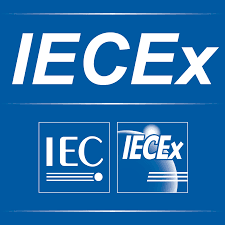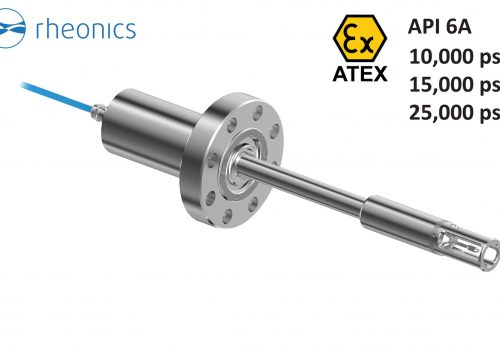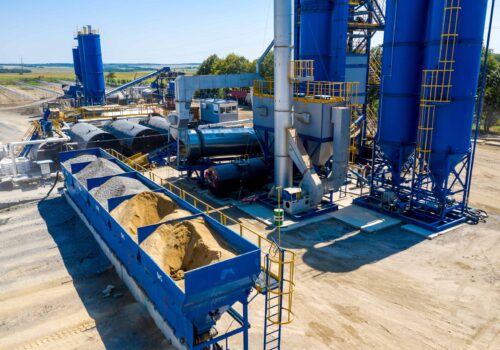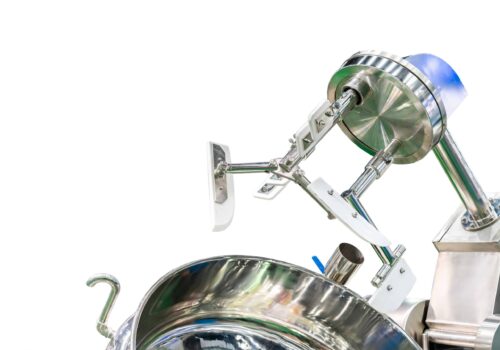Introduction
Polymer production is one of the most important areas of applied chemistry due to its significant number of applications industry and huge economic impact. Polymers are macromolecules produced from simple chemical components (monomers) by chemical reaction called as polymerization. They have gone from being cheap substitutes for natural products to providing high-quality options for a variety of applications. They are used as film packaging solid moulded forms for automobile body parts, TV cabinets, aircraft parts, foams for coffee cups and refrigerator insulation, fibers for clothing and carpets, adhesives, rubber for tires and tubing, paints and other coatings and a lot of other applications.

Application
Polymerizations are challenging to monitor online. The capability to determine conversion in chemical reactions in general and polymerization reactions in particular is extremely significant in connection with the need to closely monitor and control processes and improve the performance of existing manufacturing processes as well as new ones. Information on molecular weight distributions and end group patterns are often indispensable for accurate process and product control.
Whether a polymerization proceeds via addition as a chain reaction or condensation in a step reaction, it is essential to fully understand the chemistry in order to advance research and/or quickly bring new polymers to market. Understanding critical polymer reaction parameters can lead to precise control of multi-step polymerizations, real-time residual monomer measurements, and ultimately improved end-use polymer properties.
Challenges
Application related
The control of polymerization reaction poses serious challenges for the chemical engineer, due to the fact that these reactions are normally highly exothermic and often proceed in very viscous media that render heat and mass transport tough. These reactions are famous for exhibiting non-linear behaviour and several instances of multiplicities and sustained oscillations have been reported in industrial scale reactors.
Limitations of traditional viscosity measurement techniques
The rheological behaviour of most polymeric materials is quite complex. The viscosity is both shear and thermal history dependent. Often, the polymer viscosity is measured off-line. Most commercially available viscometers used for online process control – monitoring the degree of reaction in a polymerization reaction belong to one of the following categories: 1. Viscometers based on pressure driven flows (e.g. capillary viscometers), 2. Rotational, 3. Falling piston/sphere and 4. Vibrating tubes. Glass capillary viscometers, used traditionally for viscosity measurements are extremely laborious and time consuming – glass capillary require cleaning between tests. Most prevalent viscometry tools lack high repeatability, making them unsuitable for the application.
Polymerization reaction had been studied previously by a number of off-line analytical methods including gravimetric analysis, NMR, GC, UV-Vis and dilatometry. As the reaction proceeds, the increasing viscosity makes off-line sampling increasingly problematic and therefore these earlier investigations focused on initial stages of the polymerization reaction.
Conventional mechanical and electro-mechanical viscometers designed primarily for laboratory measurements are difficult to integrate into the control and monitoring environment. The current methodology of testing in off-site labs in not optimal and expensive due to the logistical challenges of shipping and high fixed costs. The complex changes taking place inside often cannot be determined from a routine sample because the data represented by such a sample simply reflects a snapshot of the condition at the time the sample is taken and the conventional instrumentation may be affected by shear rate, temperature and other variables.
Why is continuous online viscosity monitoring important in polymerization?
Precise engineering of macromolecular materials requires close monitoring of reaction conditions and polymerization progress, be it in the realm of industrial-scale free-radical polymerization or small-scale controlled polymerization. Well-regulated polymerization reactions yield molecules that are well-characterized with respect to composition, molecular weight, molecular weight distribution, structural and physical properties. To achieve this, it is necessary to understand and carefully control the many chemical and reaction parameters associated with the synthetic process and ensure that the synthesized polymer is “fit-for-purpose” in its intended use. Online automated monitoring is an invaluable tool to steer reactions, especially when processes are carried out in multistep fashion. Polymerization reactions are inherently highly exothermic, fast, and sensitive to small impurities (trace amounts of water). Further, often several orders of magnitude of viscosity are passed within a single reaction.
Real‐time data can be acquired by online analysis of polymer production processes, which enables rapid kinetic screening and, in consequence, efficient reaction optimization. A combination of both – continuous flow processing and online monitoring – constitutes an ideal tool in any chemical synthesis. It enables continuous “nonstop” analysis of the reaction mixture under any given set of reaction conditions. In this way, fast and efficient screening and true high‐throughput optimization of reactions become available.
ACOMP (Automatic Continuous Online Monitoring of Polymerization) of reactions can be used as an analytical method in R&D, as a tool for reaction optimization at the bench and pilot plant level and, eventually, for feedback control of full‐scale reactors. Using in situ, real-time analysis is a better means to study this polymerization since it improves measurement accuracy, eliminates the time and difficulty associated with off-line sampling and most importantly, gives a more complete understanding of the reaction kinetics and thermodynamics.
Intrinsic viscosity is an important tool in the fields of polymer and protein research and is an essential component of the ACOMP because of the following key points:
- It is a means to understand the molecular structure and the interaction in the solution.
- Measurement of intrinsic viscosity is considered to be more reliable than light scattering since it can measure lower molecular weights.
- Intrinsic Viscosity (IV) is a measure of the polymers molecular weight and therefore reflects the material’s melting point, crystallinity and tensile strength.
- The IV is used as part of the specification to select the right grade of PET for a particular application, and is measured at various points of the supply chain. Material is tested at all stages from the R&D laboratories who develop new polymers and chemical companies who draw off samples from their polymerisation towers to the processors who want to control their process and quality of finished goods.
There are several motivational benefits from cost, environmental, and logistical perspectives to on-line real time viscosity monitoring in polymer production process. Real-time viscosity information has proven valuable to provide insight into key kinetic, mechanistic and chemical structure information, while eliminating the difficulties associated with offline measurements of polymerisations reactions. Key points are as follows:
Economic and logistical advantages, reduced production costs: On line viscosity analysis would reduce the number of samples sent to off-site laboratories, and the involved costs. Continuous outputs from onsite analyses would also reduce shipping labour/costs and sampling error.
Enhanced process control through better analysis:
- Analysis of broad range of polymerizations including homogeneous (e.g., free radical and condensation) and heterogeneous (e.g. emulsion and microemulsion)
- Investigation of chain growth, crosslinking and curing
- Understanding mechanistic role of catalysts in polymerizations; determine catalyst active species and kinetics
- Monitor and proactively adjust reaction conditions as required to ensure compliance with intended end-product specifications
- Measurement of residual monomer levels and ensure that they meet product and regulatory requirements.
- Monitoring reaction throughout entire polymerization. Offline grab-sample analysis is limited to investigating early stages due to increasing viscosity and the difficulty associated with sample removal.
- Enables more accurate measurement of residual monomer throughout latter stages of polymerization reaction because of the difficulty of getting all sample out of sample extractor for off-line analysis.
- Since there is no delay between discrete samples, a more complete representation of kinetics is achieved. This enables better measurement of the reaction kinetics and the ability to predict and control reaction kinetics in real time.
- Provides far more analysis data points over the course of the polymerization, yielding more representative measurements and accurate kinetics and thermodynamics calculations.
Improved product quality and less wastage: Understanding chemistry of reactions involves factors including the kinetics of the reaction, monomer conversion rates and reactivity ratios, the relationship and influence of reaction parameters on the molecular weight and distribution, a thorough understanding of polymerization mechanism in initiation, propagation and termination phases and ensuring that the overall polymer structure meets the target application need. Being able to characterize exact reaction kinetics and accurately control it helps in achieving right polymer properties and reduce wastage.
Reduced Energy use: Optimal use of resources and electricity in reactors with tight control over the processes
Increased worker safety: Other factors such as health and safety requirements for working with solvents, consideration for the environment and the need for specialist personnel to carry out these tests (which must be carried out in a laboratory) add to the high popularity of the solvent-free method.
Faster response times: In-situ viscosity (and density) analysis would reduce/eliminate the delay between sampling and receiving a response from the laboratory.
Environment: Utilisation of resources can be maximised through on-line monitoring systems, thus resulting in reduced wastage which is good for the environment. Enhanced sustainability through reduced emissions.
Rheonics' Solutions
Automated, real time in-line viscosity measurement is critical to polymer production. Rheonics offers the following solutions, based on a balanced torsional resonator, for process control and optimisation in the polymerization process:
- In-line Viscosity measurements: Rheonics’ SRV is a is a wide range, in-line viscosity measurement device with inbuilt fluid temperature measurement and is capable of detecting viscosity changes within any process stream in real time.
- In-line Viscosity and Density measurements: Rheonics’ SRD is an in-line simultaneous density and viscosity measurement instrument with inbuilt fluid temperature measurement. If density measurement is important for your operations, SRD is the best sensor to cater to your needs, with operational capabilities similar to the SRV along with accurate density measurements.
Automated in-line viscosity measurement through SRV or an SRD eliminates the variations in sample taking and lab techniques which are used for viscosity measurement by the traditional methods. The sensor is located in-line so that it continuously measures the viscosity (and density in case of SRD). Using an SRV/SRD with ACOMP can improve productivity and increase profit margins. Both the sensors have a compact form factor for simple OEM and retrofit installation. They require no maintenance or re-configurations. Both the sensors offer accurate, repeatable results no matter how or where they are mounted, without any need for special chambers, rubber seals or mechanical protection. Using no consumables, SRV and SRD are extremely easy to operate.
Compact form factor, no moving parts and require no maintenance
Rheonics’ SRV and SRD have a very small form factor for simple OEM and retrofit installation. They enable easy integration in any process stream. They are easy to clean and require no maintenance or re-configurations. They have a small footprint enabling Inline installation in any process line, avoiding any additional space or adapter requirement.
High stability and insensitive to mounting conditions: Any configuration possible
Rheonics SRV and SRD use unique patented co-axial resonator, in which two ends of the sensors twist in opposite directions, cancelling out reaction torques on their mounting and hence making them completely insensitive to mounting conditions and flow rates. These sensors can easily cope up with regular relocation. Sensor element sits directly in the fluid, with no special housing or protective cage required.
Instant accurate readouts on process conditions – Complete system overview and predictive control
Rheonics’ software is powerful, intuitive and convenient to use. Real-time viscosity can be monitored on a computer. Multiple sensors are managed from a single dashboard spread across the factory floor. No effect of pressure pulsation from pumping on sensor operation or measurement accuracy. Unaffected by shock, vibrations or flow conditions.
Easy installation and no reconfigurations/recalibrations needed
Replace sensors without replacing or reprogramming electronics, drop-in replacements for both sensor and electronics without any firmware updates or calibration coefficient changes. Easy mounting. Screws into ¾” NPT thread in ink line fitting. No chambers, O-ring seals or gaskets. Easily removed for cleaning or inspection. SRV available with flange and tri-clamp connection for easy mounting and dis-mounting.
Low power consumption
24V DC power supply with less than 0.1 A current draw during normal operation
Fast response time and temperature compensated viscosity
Ultra-fast and robust electronics, combined with comprehensive computational models, make Rheonics devices one of the fastest and most accurate in the industry. SRV and SRD give real time, accurate viscosity (and density for SRD) measurements every second and are not affected by flow rate variations!
Wide operational capabilities
Rheonics’ instruments are built to make measurements in the most challenging conditions. SRV has the widest operational range in the market for inline process viscometer:
- Pressure range up to 5000 psi
- Temperature range from -40 up to 200°C
- Viscosity range: 0.5 cP up to 50,000 cP
SRD: Single instrument, triple function – Viscosity, Temperature and Density
Rheonics’ SRD is a unique product that replaces three different instruments for viscosity, density and temperature measurements. It eliminates the difficulty of co-locating three different instruments and delivers extremely accurate and repeatable measurements in harshest of conditions.
Clean in place (CIP)
SRV (and SRD) monitors the clean-up of lines by monitoring the viscosity (and density) of the solvent during the cleaning phase. Any small residue is detected by the sensor, enabling the operator to decide when the line is clean for purpose. Alternatively, SRV provides information to the automated cleaning system to ensure full and repeatable cleaning between runs, unlike in case of glass capillaries.
Superior sensor design and technology
Sophisticated, patented 3rd generation electronics drive these sensors and evaluate their response. SRV and SRD are available with industry standard process connections like ¾” NPT and 1” Tri-clamp allowing operators to replace an existing temperature sensor in their process line with SRV/SRD giving highly valuable and actionable process fluid information like viscosity besides an accurate measurement of temperature using an in-build Pt1000 (DIN EN 60751 Class AA, A, B available).
Electronics built to fit your needs
Available in both an explosion-proof transmitter housing and a small-form factor DIN rail mount, the sensor electronics enables easy integration into process pipelines and inside equipment cabinets of machines.


Easy to integrate
Multiple Analog and digital communication methods implemented in the sensor electronics makes connecting to industrial PLC and control systems straightforward and simple. It is extremely convenient to integrate the sensors in an ACOMP.
ATEX & IECEx Compliance
Rheonics offers intrinsically safe sensors certified by ATEX and IECEx for use in hazardous environments. These sensors comply with the essential health and safety requirements relating to the design and construction of equipment and protective systems intended for use in potentially explosive atmospheres.
The intrinsically safe and explosion proof certifications held by Rheonics also allows for customization of an existing sensor, allowing our customers to avoid the time and costs associated with identifying and testing an alternative. Custom sensors can be provided for applications that require one unit up to thousands of units; with lead-times of weeks versus months.


Implementation
Directly install the sensor to your process stream to do real time viscosity and density measurements. No bypass line is required: the sensor can be immersed in-line, flow rate and vibrations do not affect the measurement stability and accuracy. Optimize decision making process by providing repeated, consecutive, and consistent tests on the fluid.
Rheonics Instrument Selection
Rheonics designs, manufactures and markets innovative fluid sensing and monitoring systems. Precision built in Switzerland, Rheonics’ in-line viscometers has the sensitivity demanded by the application and the reliability needed to survive in a harsh operating environment. Stable results – even under adverse flow conditions. No effect of pressure drop or flow rate. It is equally well suited to quality control measurements in the laboratory.
Suggested product(s) for the Application
• Wide viscosity range – monitor the complete process
• Repeatable measurements in both newtonian and non-newtonian fluids, single phase and multi-phase fluids
• All metal (316L Stainless Steel) construction
• Built in fluid temperature measurement
• Compact form-factor for simple installation in existing process lines
• Easy to clean, no maintenance or re-configurations needed
• Single instrument for process density, viscosity and temperature measurement
• Repeatable measurements in both newtonian and non-newtonian fluids, single phase and multi-phase fluids
• All metal (316L Stainless Steel) construction
• Built in fluid temperature measurement
• Compact form-factor for simple installation in existing pipes
• Easy to clean, no maintenance or re-configurations needed





